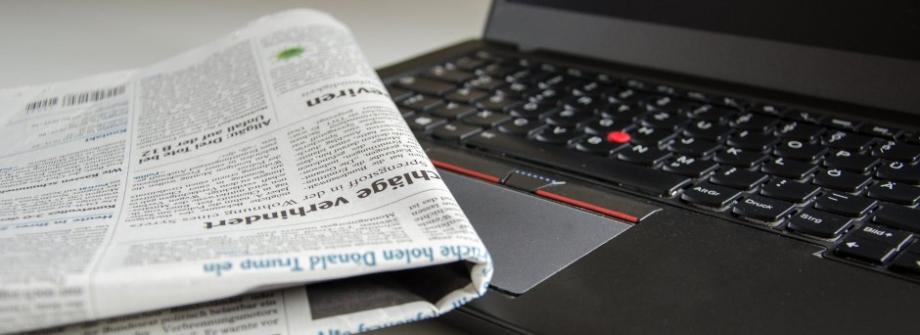
Giorgio Orofino* and Annalisa Ruggeri** comment on the publication entitled “Post-Transplantation Cyclophosphamide-Based Graft-versus-Host Disease Prophylaxis” published in The New England Journal of Medicine.
* Giorgio Orofino, MD, Hematology-Oncology Fellow, Università Vita e Salute San Raffaele, Milan, Italy
** Annalisa Ruggeri, MD, PhD, Hematology and BMT Unit, IRCCS San Raffaele Hospital, Milan, Italy
Post-Transplantation Cyclophosphamide-Based Graft-versus-Host Disease Prophylaxis
Javier Bolaños-Meade, M.D., et al, NEJM, June 2023; N Engl J Med 2023; 388:2338-2348
DOI: 10.1056/NEJMoa2215943
Post-transplantation Cyclophosphamide (PTCy), firstly adopted in the haploidentical setting1 by the John Hopkins group, changed the approach to GvHD prophylaxis reducing drastically the rates of both acute and chronic GvHD. A number of single center and multicenter studies suggested that PTCy may improve outcomes also in different transplant settings such as matched related and unrelated, but also mismatched unrelated, transplants2,3,4. Moreover, PTCy proved to be a very versatile platform to be combined with different drugs such as calcineurin inhibitors5, mycophenolate6, antithymocyte globulin (ATG)7, and sirolimus8 in malignant and non-malignant diseases, in both adult and pediatric populations9
In this phase III BMT trial reported in The New England Journal of Medicine, Bolaños‑Meade et al observed that post-transplantation cyclophosphamide-based graft-vs-host disease (GVHD) prophylaxis improved GVHD-free, relapse-free survival in patients transplanted from an HLA-matched related donor or a matched or 7/8 mismatched unrelated donor, after reduced-intensity conditioning versus tacrolimus–methotrexate, considered the standard of care.
In this trial, 431 patients were randomly assigned to receive GvHD prophylaxis with PTCy, tacrolimus, and mycophenolate mofetil (n = 214) or tacrolimus/methotrexate prophylaxis, between June 2019 and June 2021.
The primary end point of the study was GVHD-free, relapse free survival at 1 year. Secondary end points included the incidence of grade II to IV GVHD and of grade III or IV acute GVHD, systemic immunosuppression-free survival, hematologic recovery, engraftment, disease relapse or progression, transplantation-related death, disease-free survival, overall survival and other adverse events related to transplantation.
At 1 year, adjusted GVHD-free, relapse-free survival (GRFS) was 52.7% (95% confidence interval [CI] = 45.8%–59.2%) in the cyclophosphamide-based treatment group vs 34.9% (95% CI = 28.6%–41.3%) in the control group.
The estimated cumulative incidence of grade III or IV acute GVHD appeared to be lower in the experimental-prophylaxis group (6.3%; 95% CI, 3.5 to 10.2) than in the standard-prophylaxis group (14.7%; 95% CI, 10.3 to 19.8). The observed cumulative incidence of chronic GVHD at 12 months after transplantation also favored the PTCy group (21.9% [95% CI, 16.4 to 27.9] vs. 35.1% [95% CI, 28.7 to 41.6]); similarly, immunosuppression-free survival at 1 year was higher among patients that received PTCy (50.0% vs 39.7%).
No substantial differences between the PT-Cy group vs the standard group were observed in 1-year rates of overall survival, disease-free survival, disease relapse or progression or transplantation-related death. The cumulative incidence of neutrophil and platelets engraftment were similar among the two groups.
In a multivariate Cox regression analysis, GRFS was significantly higher among patients receiving PTCy when compared to the control group (estimated hazard ratio, 0.64; 95% confidence interval [CI], 0.49 to 0.83; p=0.001).
In conclusion, this randomized trial demonstrated the superiority of PTCy in reducing acute and chronic GvHD in the setting of matched related donor or a matched or 7/8 mismatched unrelated donor, after reduced-intensity conditioning versus tacrolimus–methotrexate GVHD prophylaxis.
In the field of transplantation, phase III randomized control are difficult to perform, and this work is crucial to optimize GvHD prophylaxis for patients receiving HCT.
A potential limitation of the present work is the absence of ATG in the control group, frequently included in GvHD prophylaxis regimen with low rates of acute and chronic GvHD reported10. Indeed, PTCy and ATG have already been compared in some recent works11, but large, international, multicenter, randomized clinical trials are warranted.
References:
- Luznik L, et al-HLA-haploidentical bone marrow transplantation for hematologic malignancies using nonmyeloablative conditioning and high-dose, posttransplantation cyclophosphamide. Biol Blood Marrow Transplant. 2008 Jun;14(6):641-50. doi: 10.1016/j.bbmt.2008.03.005. PMID: 18489989; PMCID: PMC2633246.
- Gooptu M, et al-HLA-haploidentical vs matched unrelated donor transplants with posttransplant cyclophosphamide-based prophylaxis. Blood. 2021 Jul 22;138(3):273-282. doi: 10.1182/blood.2021011281. PMID: 34292325; PMCID: PMC8310426.
- Greco R, et al-Posttransplantation Cyclophosphamide- and Sirolimus-Based Graft-Versus-Host-Disease Prophylaxis in Allogeneic Stem Cell Transplant. Transplant Cell Ther. 2021 Sep;27(9):776.e1-776.e13. doi: 10.1016/j.jtct.2021.05.023. Epub 2021 Jun 1. PMID: 34087452.
- Lorentino F, et al-Post-transplantation cyclophosphamide GvHD prophylaxis after hematopoietic stem cell transplantation from 9/10 or 10/10 HLA-matched unrelated donors for acute leukemia. Leukemia. 2021 Feb;35(2):585-594. doi: 10.1038/s41375-020-0863-4. Epub 2020 May 14. PMID: 32409688.
- Broers AEC, et al-Posttransplant cyclophosphamide for prevention of graft-versus-host disease: results of the prospective randomized HOVON-96 trial. Blood Adv. 2022 Jun 14;6(11):3378-3385. doi: 10.1182/bloodadvances.2021005847. PMID: 35143644; PMCID: PMC9198908.
- Galli E, et al-Triple post transplant cyclophosphamide (PTCY) based GVHD prophylaxis: HLA matched versus HLA haploidentical transplants. Bone Marrow Transplant. 2022 Apr;57(4):532-537. doi: 10.1038/s41409-022-01574-0. Epub 2022 Jan 22. PMID: 35066570.
- Battipaglia G, et al-Impact of the Addition of Antithymocyte Globulin to Post-Transplantation Cyclophosphamide in Haploidentical Transplantation with Peripheral Blood Compared to Post-Transplantation Cyclophosphamide Alone in Acute Myelogenous Leukemia: A Retrospective Study on Behalf of the Acute Leukemia Working Party of the European Society for Blood and Marrow Transplantation. Transplant Cell Ther. 2022 Sep;28(9):587.e1-587.e7. doi: 10.1016/j.jtct.2022.06.006. Epub 2022 Jun 14. PMID: 35714906.
- Lazzari L, et al-Post-transplant cyclophosphamide and sirolimus based graft-versus-host disease prophylaxis after allogeneic stem cell transplantation for acute myeloid leukemia. Bone Marrow Transplant. 2022 Sep;57(9):1389-1398. doi: 10.1038/s41409-022-01725-3. Epub 2022 Jun 9. PMID: 35680995; PMCID: PMC9439951.
- Ruggeri A, et al-Outcomes of Unmanipulated Haploidentical Transplantation Using Post-Transplant Cyclophosphamide (PT-Cy) in Pediatric Patients With Acute Lymphoblastic Leukemia. Transplant Cell Ther. 2021 May;27(5):424.e1-424.e9. doi: 10.1016/j.jtct.2021.01.016. Epub 2021 Jan 21. PMID: 33965182.
- Kröger N, et al-Antilymphocyte Globulin for Prevention of Chronic Graft-versus-Host Disease. N Engl J Med. 2016 Jan 7;374(1):43-53. doi: 10.1056/NEJMoa1506002. PMID: 26735993.
- Battipaglia G, et al- Posttransplant cyclophosphamide vs antithymocyte globulin in HLA-mismatched unrelated donor transplantation. Blood. 2019 Sep 12;134(11):892-899. doi: 10.1182/blood.2019000487. Epub 2019 Jul 3. PMID: 31270102.